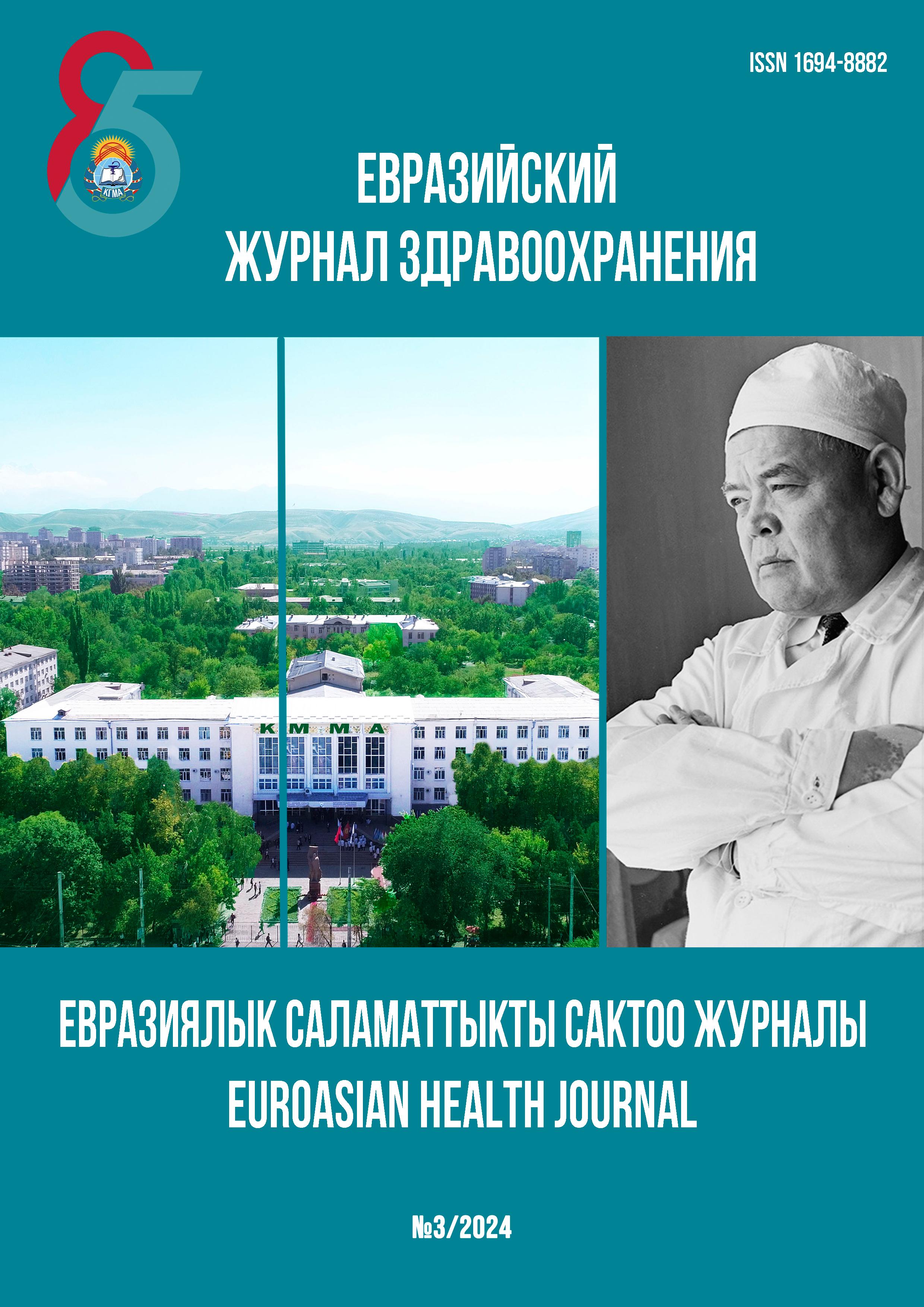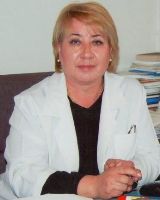RESULTS OF DIAGNOSIS AND SURGICAL TREATMENT OF SPINAL CORD INJURY
DOI:
https://doi.org/10.54890/1694-8882-2024-3-163Abstract
The work examines the features of the clinical and neurological symptoms of spinal cord injury, a comparative analysis of the effectiveness of various diagnostic methods is carried out, the structure of postoperative complications and ways of their prevention are studied.
Material and methods. An analysis of the results of surgical treatment in a total of 102 subjects showed that improvement was noted in 49 (48.0%) patients, while 53 (52.0%) of the victims had no improvement. The highest percentage of improvement was observed in patients under the age of 20 - 4 (80.0%), and the highest percentage of poor results was observed in the older age group (60 years and older) - 6 (66.7%).
Results. An analysis of the results of surgical treatment and the outcomes of various levels of damage showed the following data: among 38 patients with cervical injury, 11 (28.9%) improved, 22 (57.9%) remained unchanged, 5 (13.2%) victims died. In 12 patients with thoracic injury, 8 (66.7%) improved, 4 (33.3%) remained unchanged, and no mortality was noted. Improvement among 40 patients with damage to the thoracolumbar region was noted in 21 (52.5%), without changes - 19 (47.5%), there were no deaths. Among patients with lumbar injury, improvement was noted in 7 (58.3%) cases, in 5 (41.7%) – without changes, there were no fatal cases.
Keywords:
spinal cord injury, diagnosis, spinal fracture, complicated spinal trauma, conservative and surgical treatmentReferences
1. Генов П.Г. Особенности послеоперационного болевого синдрома и подходы к его лечению при различных видах хирургических вмешательств на позвоночнике. Нейрохирургия. 2012;3:83-92.
2. Ташибеков Ж.Т., Ырысов К.Б. Результаты клинико-неврологических и инструментальных методов диагностики позвоночно-спинномозговой травмы. Вестник КГМА им. И.К. Ахунбаева. 2022;4:79-86.
3. Ташибеков Ж.Т., Ырысов К.Б., Кадыров Р.М., Машрапов Ш.Ж. Факторы, влияющие на исход острой травмы шейного отдела позвоночника. Научное обозрение. Медицинские науки. 2022;3:15-19.
4. Гринь А.А., Григорьева Е.В. Лучевая диагностика позвоночно-спинномозговой травмы (часть 2). Нейрохирургия. 2013;1:7-21.
5. Гринь А.А., Кайков А.К., Крылов В.В. Осложнения и их профилактика у больных с позвоночно-спинномозговой травмой (часть 1). Нейрохирургия. 2014;4:75-85.
6. Ташибеков Ж.Т., Ырысов К.Б. Клиника, диагностика и хирургическое лечение травмы шейного отдела позвоночника и спинного мозга (Обзор литературы). Здравоохранение Кыргызстанаю 2014;2:91-96.
7. Джумабеков С.А. Хирургическое лечение повреждений, их последствий и дегенеративных поражений грудопоясничного отдела позвоночника. Бишкек; 2008. 304 с.
8. Ырысов К.Б., Ташибеков Ж.Т. Диагностика и хирургическое лечение осложненной травмы позвоночника и спинного мозга. Нейрохирургия и неврология Казахстана. 2020;3(60):21-26.
9. Alexander MS. Research Measurement of functions after spinal cord injury: preferred instruments. J Spinal Cord Med. 2016;32(3):226-36.
10. Abd-El-Barr MM, Huang KT, Moses ZB, Iorgulescu JB, Chi JH. Recent advances in intradural spinal tumors. Neuro Oncol. 2018;20(6):729-742. https://doi.org/ 10.1093/neuonc/nox230
11. Asiltürk M, Abdallah A, Sofuoglu EÖ. Radiologic-Histopathologic Correlation of Adult Spinal Tumors: A Retrospective Study. Asian J Neurosurg. 2020;15(2):354-362. https://doi.org/10.4103/ajns.AJNS_366_19
12. Wainwright JV, Endo T, Cooper JB, Tominaga T, Schmidt MH. The role of 5-aminolevulinic acid in spinal tumor surgery: a review. J Neurooncol. 2019;141(3):575-584. https://doi.org/10.1007/s11060-018-03080-0
13. Azad TD, Jiang B, Bettegowda C. Molecular foundations of primary spinal tumors-implications for surgical management. Ann Transl Med. 2019;7(10):222. https://doi.org/10.21037/atm.2019.04.46
14. Krasnow MS, Griffin JF 4th, Levine JM, Mai W, Pancotto TE, Kent M, et al. Agreement and differentiation of intradural spinal cord lesions in dogs using magnetic resonance imaging. J Vet Intern Med. 2022;36(1):171-178. https://doi.org/10.1111/jvim.16327
15. Hersh AM, Jallo GI, Shimony N. Surgical approaches to intramedullary spinal cord astrocytomas in the age of genomics. Front Oncol. 2022;12:982089. https://doi.org/10.3389/fonc.2022.982089
16. Serratrice N, Lameche I, Attieh C, Chalah MA, Faddoul J, Tarabay B, et al. Spinal meningiomas, from biology to management - A literature review. Front Oncol. 2023;12:1084404. https://doi.org/10.3389/fonc.2022.1084404







